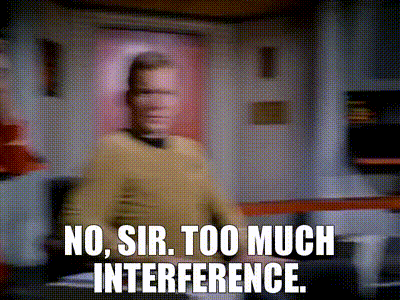Is American Hospital Billing The Biggest Scam Today?
I don’t care how bad the pain is, hospital Tylenol is not worth $4,000.

Imagine you’re itching for a manicure and a luxurious pedicure, including callus softening, skin scrubbing, foot massage, and foot mask. You arrive at the salon, take a look at the price sheet (which looks oddly reminiscent of a restaurant menu), and tally up your selections in your mind. Once your feet are soaking and the nail technicians are getting busy prepping your fingernails, you already know roughly how much your spa day will cost.

Your nail salon was transparent with you ahead of time, and despite their best efforts to get you to do dip nails or add on a facial, you don’t end up leaving the salon beautified but bankrupt. You’d imagine that’s a standard practice across many industries, right?
In the world of American healthcare, it’s not. Today, many patients only get the bill for their healthcare after they’ve received treatment at the hospital or finished their visit with the doctor. Feels like a scam, doesn't it? You come in seeking honest help for medical problems, both elective and essential, and you’re left totally in the dark about the cost until the system has trapped you in its web. That’s because it is a scam! Fortunately, the system isn’t yet broken beyond repair.
After-the-Fact Medical Billing Has Gotten out of Control
Take, for example, the viral TikTok video by user @oh_thats_just_trey, Tre’Jon Wilson, who exposed his hospital’s billing scam. He alleges that he received a $4,000 bill, but after he asked for a receipt with an itemized list of the charges, the hospital lowered his bill by 76% to just $950.
Such is the plight of many other Americans who have shared their stories online, like TikTok user @amandersruns, whose hospital charged her nearly $4,000 for four doses of acetaminophen (yes, the common painkiller you can buy at CVS) while she was undergoing a Cesarean section to deliver her baby. Let’s just say that her itemized list was eye-opening.
It seems like a fluke, but medical bills are based on an extremely complex, algorithmic billing and coding system that evaluates everything from diagnosis, treatment methods used, types of injections, pre-existing conditions, type of insurance, and more. The catch is that some hospital coders reportedly teach doctors how to “upcode,” a.k.a. upcharge a patient’s chart to be more lucrative.
For example, you may have been billed for a 60-minute face-to-face session with your doctor, when in reality you only saw him for about 15 minutes. For some patients like Perla Ni, this was the difference between a $143,396.66 breast biopsy bill and a $7,750 out-of-pocket payment for her, and a negotiated price of $67,088 for her insurance.

“On a recent trip to Carlsbad, New Mexico, to help a patient who was overcharged for a CAT scan, I decided to walk over to the hospital’s radiology counter to ask how much a CAT scan of the abdomen actually costs. I gave the radiology representative the exact medical code for the procedure. She said it would cost ‘about $5,000,’ which translates to a direct out-of-pocket cost of $5,000 for many out-of-network patients and those with a high deductible," explains Dr. Marty Makary, a Johns Hopkins School of Medicine professor of Surgery and Health Policy.
“Knowing the price should be much lower, I explained my frustration at the price and pointed out that other imaging centers charge far less. She responded by whispering to me, ‘OK, if you go to MDsave.com, we list it there for about $500.’ Actually, $522 to be exact, when I checked the website. Why does a hospital drop its prices so dramatically on a competitive website? That’s the power of transparent markets,” he concludes.
A Transparent Market Is a Fair Market
Like at your nail salon, you’d expect price transparency to be the norm, but with all of the cases going viral, it almost feels like misleading healthcare costs are the rule, not the exception. According to Hadley Heath Manning, vice president for policy at Independent Women’s Forum and Independent Women’s Voice, healthcare pricing in the U.S. is indeed a scam, but it’s critically important to understand why things ended up this way.
“I do not think the healthcare system is an example of greedy capitalism run amok. It's not so simple. Other markets and other industries don't have the same problem when it comes to prices being hidden from consumers. Why? Because other markets face more pressure directly from consumers to share pricing information,” Heath Manning explains.
Competition is indeed key in controlling healthcare costs, as is the case with any other service. Imagine if health providers were forced to compete with one another and prove that they provide a better bang for your buck. I know I’m loyal to one nail salon because they provide the best manicures for a price I consider to be a steal, just like I know how some people are loyal to a particular restaurant where they can eat a meal they love, have enough for leftovers the next day, and don’t feel like they were charged an arm and a leg. But healthcare is more complicated than manicures or dining out because of well-intended but decidedly harmful government intervention.

Let’s be clear: For-profit health systems aren’t the problem here because, as the saying goes, you shouldn’t throw the baby out with the bath water. Public healthcare isn’t a better option for us because it doesn’t solve the root issues that arise with a for-profit healthcare system, such as transparency, affordability, and a lack of choice. Furthermore, we don’t actually even have a free-market healthcare system right now. If we did, you wouldn’t read statistics like 26% of consumers only being able to select from one insurance plan for their geographic area.
“Sadly, healthcare in the U.S. has become dominated by third-party payers. This means that the government – through public insurance programs like Medicaid and Medicare – along with employers and insurance companies, pay most of the bills to hospitals and other healthcare providers. They pass this cost along to patients and taxpayers, of course, through higher insurance premiums and higher taxes, but this means there's no downward pressure on price and little leverage (absent government action) for price transparency,” states Heath Manning.
Your Government at Work
As awareness of egregious hospital billing increases, bipartisan movements have been brewing to improve price transparency through regulations and legislation. In June 2019, President Donald Trump signed an executive order to increase price transparency and reduce healthcare costs, requiring both hospitals and insurance companies to disclose hidden negotiated rates and their real cash prices. In signing this order, he shared that he felt Americans have a right to know the costs of services before visiting their doctors.
This executive order sparked direction from the Department of Health and Human Services and Centers for Medicare and Medicaid Services (CMS) to develop regulations that became effective in January 2021. Among the regulations were standards, including hospitals needing to disclose prices for “shoppable services” packaged in a consumer friendly, easy to read format. It also set the standard for insurers and healthcare providers to provide out-of-pocket costs they might face before they actually receive their care.
Though the Trump administration making price transparency a priority was a major win for Americans facing a scam-like billing system, the process to adopt and implement the rules has been slow. According to Health Manning, the Biden administration hasn’t tried to reverse Trump’s progress, but rather has “delayed and dragged its feet on continuing to implement the Trump-era rules.”
What’s more, not all hospitals have complied. Some hospitals that haven’t complied with price transparency have collected massive fines, like Northside Hospital Atlanta and Northside Hospital Cherokee, which owe over $1 million for failing to provide online prices for their consumer’s medical services.

In response to the federal rules not being strongly enforced or adopted quickly, some states have sought more advanced price transparency legislation, like New Hampshire's bill HB 389 or Virginia’s bill HB 2427. If this movement is to stand the test of time, however, these price transparency rules will need to be codified (i,e., enshrined in law, not just executive orders) so they aren’t subject to change based on the policy positions that future administrations take.
“Systemic reform is needed, but it's very difficult, and in many ways, not politically palatable. That's the beauty of the price transparency movement. It presents an opportunity for systemic reform in healthcare that actually could have – and certainly should have – broad support, making it politically feasible,” concludes Heath Manning.
How Can You Protect Yourself?
Change doesn’t happen overnight, especially if you’re talking about the government. I mean, we all know exactly what the Department of Motor Vehicles (DMV) is infamous for, and it’s not the speed at which they process your vehicle registration, that’s for sure.

While legislators are working to make sure the government requires price transparency for your healthcare services and health insurance plans, there are a few ways you can safeguard yourself against getting scammed when the time comes to pay for your elective and essential care.
The first – and arguably most critical step, which you’re already taking by simply reading this – is to get educated on the topic. Whether you’ve been booted off your parents' health insurance or you’ve been on your own plan for quite a few years now, anything related to healthcare can seem quite daunting. As the patient, you have been separated from your healthcare provider through a long, complicated payment pipeline.
The CMS provides three tips for getting the most out of hospital price transparency. First, make sure you review the data. As part of the Executive Order on Improving Price and Quality Transparency in American Healthcare, which went into effect in 2021, hospitals have to post their standard charges for things like X-rays, outpatient visits, laboratory tests and imaging, and other similar services. The hospital has to post at least 300 of them, there needs to be a description which includes other services that the hospital provides alongside it, and these services must be things that can be planned in advance.
Next, they recommend you use online tools like Care Compare, which helps inform you about the quality of care you could receive at a particular hospital, what they will potentially charge you, and more. Finally, they recommend that you shop around at multiple hospitals. Don’t just settle for the first number you see! Just like how you can sometimes find your favorite cosmetics or skincare products for one price at Ulta and another price at Target, you can find things like X-rays or lab tests at differing costs.
You should also genuinely take the TikTok trend about asking for an itemized receipt to heart. There’s no guarantee that you’ll end up with a 76% discount on your hospital bill like Tre’Jon Wilson did, but learning how to negotiate your medical bills can save you a lot of cash.
Finance experts recommend that you try negotiating before treatment and bring your estimates to your insurance provider to see if they can negotiate costs. When you’re requesting itemized bills (Explanation of Benefits or EOBs), don’t pay it until you’ve double-checked for medical bill errors such as double billing, inaccurate insurance reimbursement, preventative care charges, incorrect codes (think, the $4k Tylenol case), and even incorrect personal information. You can also look into resources like AMPS, which has a medical bill review feature that “corrects errors, mistakes, and overcharges on hospital bills prior to the application of a PPO discount.”
Closing Thoughts
Even though the American healthcare system has major flaws and habitually swindles us out of our hard-earned cash, it’s worth keeping in mind that the best place in the world to be if you get sick is still the U.S. We have some cultural problems that make us pretty unhealthy (look at the obesity epidemic), but we also have high survival rates for serious conditions like cancer, low wait times compared to our northern neighbors, and benefit from being a nation that’s leading in medical innovation.
There’s a reason why people flock to America to treat whatever ails them. We’re not experiencing the plights of government-run healthcare systems like the U.K.’s NHS, where heart attack and stroke patients wait 1 ½ hours on average for an ambulance and 7.1 million English residents are stuck on slow-moving waiting lists for nonemergency, but still necessary treatments like hip replacements. We don't have a healthcare crisis – we actually have a health cost crisis. The executive order for cost reduction and increased transparency was just the first step to de-scamming our healthcare system, but there’s still a lot of work left to do.
Don’t miss anything! Sign up for our weekly newsletter and get curated content weekly!